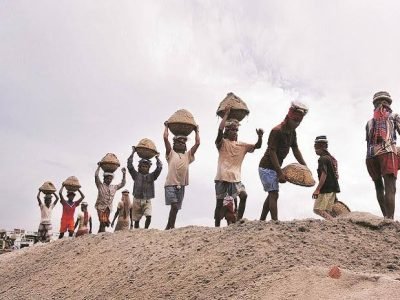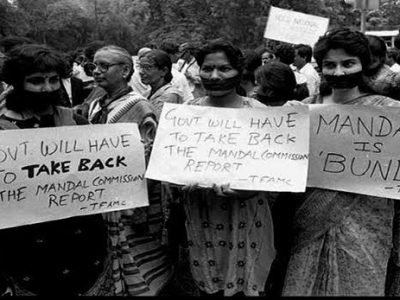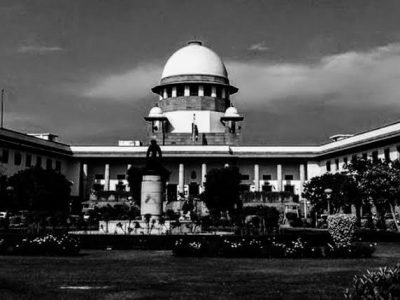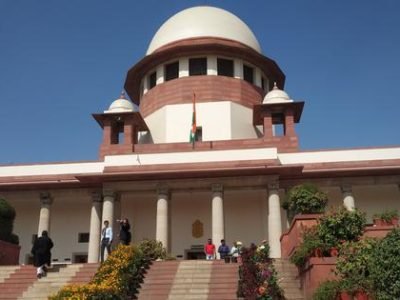
Author: Aparna Bhatnagar, 1st year student at Maharashtra National Law University, Mumbai.
Introduction
Rajagopal v. State of T. N.[1] is considered to be a landmark judgement for upholding the rights guaranteed to the press under the Indian Constitution. It is seen as a bulwark against excessive governmental invasion, and for striking a fine balance between the rights of privacy and freedom of speech and expression. The oft-quoted judgement has been recognised as paving the way for the eventual establishment of right to privacy in the recent Puttaswamy[2] verdict. The judgement finds relevance in the contemporary discourse as instances of governments stifling dissent and silencing independent journalists by way of political persecution or archaic sedition laws are on the rise across the globe. This produces, what scholars call a ‘chilling effect’[3], impeding the free and efficient functioning of a democracy and leading to totalitarianism. As enunciated by the Court, there is a growing need to define the precedence of rights in the intersection of various spheres of privacy and public concern, conflagerated in the age of growing electronic and print media. In light of these concerns, the case of R. Rajagopal must be revisited.
Essential Details of the Case
Case Citation: 1994 SCC (6) 632
Petitioner(s): R. Rajagopal And Another
Respondent(s): State of T.N. And Others
Petitioner’s Lawyer(s): B. D. Sharma
Respondent’s Lawyer(s): A. Mariarputham And Ms. Aruna Mathur
Concerned Statues and Provisions: Article 19(1)(a) of the Indian Constitution, Article 19(2) of the Indian Constitution, Section 499 of the Indian Penal Code, 1860, Section 500 of the Indian Penal Code, 1860
Bench: B.P. Jeevan Reddy and S.C. Sen
Date of Judgement: 07 October 1994
Present Status: Decided
Facts of the Case
It was contested by the petitioners that Auto Shankar, a murder convict sentenced to death, penned his autobiography and gave it to his wife, Smt. Jagdishwari for giving it to his advocate, Shri Chandrashekharan. Auto Shankhar allegedly conveyed his desire to have his autobiography published in the Tamil weekly Nakkheeran through letters to his advocate as well as the editors of the aforementioned magazine. The biography contained an elaborate account of several IAS and IPS officers colluding with Auto Shankar and being accomplices in his crimes. The exchanges between these high-profile officers and Auto Shankar were proved by way of video cassettes and photographs showing a close network. The magazine posted an announcement informing its readers that it would be publishing the biography of Auto Shanker, which ‘exposes’ several public officials. The prison officials, on coming of knowledge of the announcement, used unlawful force on Auto Shankar and coerced him into writing a letter to the editors asserting that he was not the author of the book, nor had he authorized his advocate to send it to the magazine, and requesting that his biography not be published. Citing this, the prison officials sent an ultimatum to the editors asking them to immediately halt the publication of the biography, failing which, they would initiate legal action. Alleging a violation of their fundamental right of speech and expression, the editors approached the Court to grant them relief.
Issues Raised
- Whether a citizen of India can be legally restrained from writing his/her autobiography? Does the writing of such a biography by a third person violate the said person’s right to privacy? What is the extent to which the press may be allowed to print another person’s biography without his/her authorization, and what are the remedies available to the person claiming an infringement of right to privacy?
- Whether the Government can sue for defamation?
- Whether the Government is empowered to put prior restraints on the press for publication of material which it may deem defamatory?
- Whether the public officials are empowered to put prior restraints on the press for publication of material which it may deem defamatory?
- Whether the prison officials have the power to institute proceedings regarding the infringement of fundamental rights on behalf of prisoners?
Argument from the Petitioners
- The petitioners, at the outset, questioned the veracity of the letters sent by Auto Shankar requesting the editors to stop publication, alleging that he was coerced into writing them by the police officials who used unlawful third grade methods. The petitioners claimed that the threatening tone of the letter posted by the police officers compelled them to stop the publication, and cited an incident from 1991 where the police officials had arrested the editors and vandalized their printing press for publishing an investigative report on the Government. The petitioners claimed that this forced stopping of their publication amounted to a violation of the freedom of press guaranteed by the Constitution under Article 19(1)(a).[4]
- They further argued that the condemned prisoner had an unwavering right to have his biography published, and that no Government could put prior restraints on the publication of the same. The police officials had no locus standi in bringing an action on behalf of the prisoner, alleging a violation of his right to privacy.
- It was stated by the petitioners that no order had been passed by the High Court regarding proceedings initiated for similar reliefs there. In the absence of such an order, the petitioner’s writ petition before the Supreme Court was valid under Article 32.[5]
Argument from the Respondents
- The respondents, at the outset, submitted that a similar writ petition by the petitioners before the High Court had been dismissed for the want of proof of fact that the prisoner had indeed written his biography. This was also held in view of the failure of the petitioners to name the prisoner’s wife, nor his counsel as parties to the writ, and their inability to produce the letters written by the prisoner to the petitioners before the Court. Since the Court cannot probe a question of fact under Article 32, therefore the petition, in view of the unresolvable issue regarding the author of the biography, was not maintainable.
- Further, it was submitted that the allegations of collaboration of the public officers in the nefarious activities of the prisoners were fabricated. The impugned biography sought to maliciously defame officials who held positions of immense importance and respectability. Thus, prior restraint on the publication of such a work was crucial.
- They denied the usage of third-degree methods to coerce the prisoners to write the letters to the petitioners and submitted that they were written by the prisoner out of free will.
Judgement held
Because of its inability to probe questions of fact, the Court started with the assumption that the prisoner had neither written, nor authorized the editors of the magazine to publish his biography. Tracing the origins of the right to privacy to the field of law of Tort, the Court held that the right has two aspects. First, a tort action emanating from unlawful violation of the right to property, and second, the Constitutional recognition protecting personal privacy from governmental interference.
The violation of right to privacy can be said to occur in cases where a person’s life story- laudatory or otherwise- is published without his consent.
Outlining the trajectory of legal development around the recognition of right to privacy, the Court enunciated that the first judicial pronouncement regarding that had been delivered in Kharak Singh v. State of U.P[6]. A more careful evaluation of this right was done in Govind v. State of M.P.[7], where the judges took inspiration from the United States Supreme Court cases of Griswold v. Connecticut[8] and Roe v. Wade[9] and held that any such right must seek to protect the privacy of home- encompassing relations of marriage, motherhood, procreation, etc. It must be noted that all four of these cases concerned governmental invasion in matters of privacy. While Kharak Singh and Gobind were cases of governmental surveillance breaching right to privacy, Griswold was regarding a Connecticut law forbidding the use of contraceptives and Roe concerned the abortion rights of women.
It further held that a right to privacy is implicit within the broader framework of ordered liberty. The Court, in the present case, enunciated that a straightjacket formula for claims under right to privacy cannot be developed, and that it must follow a ‘case by case’ development. The Court mentioned the celebrated article of Warren and Brandies on right to privacy[10], and the case of Time, Inc. v. Hil1[11], where the US Supreme Court overruled the New York Supreme Court’s decision to award damages to the plaintiff for breach of right to privacy by the press. It applied the rule of New York Times Co. v. Sullivan[12] and held that false reports on matters of public interest can only be regulated if it is proven that they were published in “reckless disregard of truth.” In Cox Broadcasting Corpn. v. Cohn[13], it was held that media houses publishing the name of rape victims cannot be said to be violative of the victim’s privacy, if the names are obtained from public records.
Finally, the Court referred to the well-known case of New York Times v. Sullivan[14] which established that public officials may recover damages from a suit of defamation only when they are able to prove that the statement was made with “reckless disregard” of its falsity. Lord Keith, in Attorney General v. Guardian Newspapers Ltd [15], stated that “Governments are not in a position to exercise the rights available to private citizens unless they can show that it is in the public interest to do so.” The court referred to the case of Leonard Hector v. Attorney General of Antigua and Barbuda[16] where Lord Bridge of Harwich observed that public officials in a democratic setup must always be open to criticism, and any attempt to stifle dissent amounts to insidious political interference.
The Court delved into the applicability of judicial pronouncements of the United States of America and the United Kingdom, cautioning that the Indian society may not share the same degree of awareness. It detailed that though the Indian Constitution does not grant the same sweeping rights to the press as under the First Amendment of the United States, the basic framework is similar.
On the question of prior restraints by the government, the Court drew its reasoning from New York Times v. United States[17] and held that neither the State nor the officials apprehending defamation could put in place prior restraints upon the publication of the impugned work. The only remedy available is a suit of defamation post-publication. On the question of prison official’s locus standi in initiating a suit for the breach of the prisoner’s right to privacy, the Court held that the officials do not hold the power to do so.
Lastly, taking into consideration the facts and circumstance of the case, the Court held that passing of orders by the High Court will not be a bar on the maintainability of the petition, and ordered that it be considered a Special Leave Petition.
- Critical Analysis:
The Court, by way of this judgement, established the broad principles governing the intersection between rights to privacy and that of freedom of speech and expression. Recognising the right to privacy as implicit in the articulation of right to life and liberty under Article 21, the Court held that the private sphere must always be protected from uncalled intervention by others. An exception to this, the Court enunciated, is when the person voluntarily places herself in a position of controversy, or when the media publishes a work pertaining to their personal life based on public records. In view of decency, as enumerated in Article 19(2), the Court held that the publication of female victims of assault shall not form a part of this exception. Drawing from the reasonings of judicial pronouncements from various jurisdictions, the Court held that public officials, by virtue of incubating offices of public interest, bear the double burden of proving not only the falsity of fact, but also that the fact/publication was actuated by malice (reckless disregard for truth), for a successful action for damages in claims of breach of privacy.
The Court also enunciated that public officials do not possess the right to initiate defamation proceedings, inasmuch as the proceedings relate to their official conduct. Finally, the Court also established that no act of the Parliament empowers the government to impose prior restrictions on publication, and any act such as this must be seen as curtailing the constitutionally recognised rights of the press.
To conclude, the Court rightly articulated that in spheres of collision of rights of personal privacy and of freedom of the press, a just balance is found to be rooted in the traditions of each society and the Constitutional morals guiding it. The evolution of the rights must entail an incremental approach and keep pace with contemporary developments of the society.
References
[1] 1994 SCC (6) 632.
[2] (2017) 10 SCC 1.
[3] Wieman v. Updegraff, 344 U.S. 183 (1952).
[4] INDIA CONST. art. 19, § 1, cl. a.
[5] INDIA CONST. art. 32.
[6] AIR 1963 SC 1295.
[7] 1975 2 SCC 148.
[8] 381 US 479.
[9] 410 US 113.
[10] Warren & Brandies, The Right to Privacy, 4 Harvard Law Review 193 (1890).
[11] 385 US 374.
[12] 376 US 254.
[13] 420 US 469.
[14] 376 US 254.
[15] 1990 1 AC 109.
[16] 1990 2 AC 312.
[17] 403 US 713.






